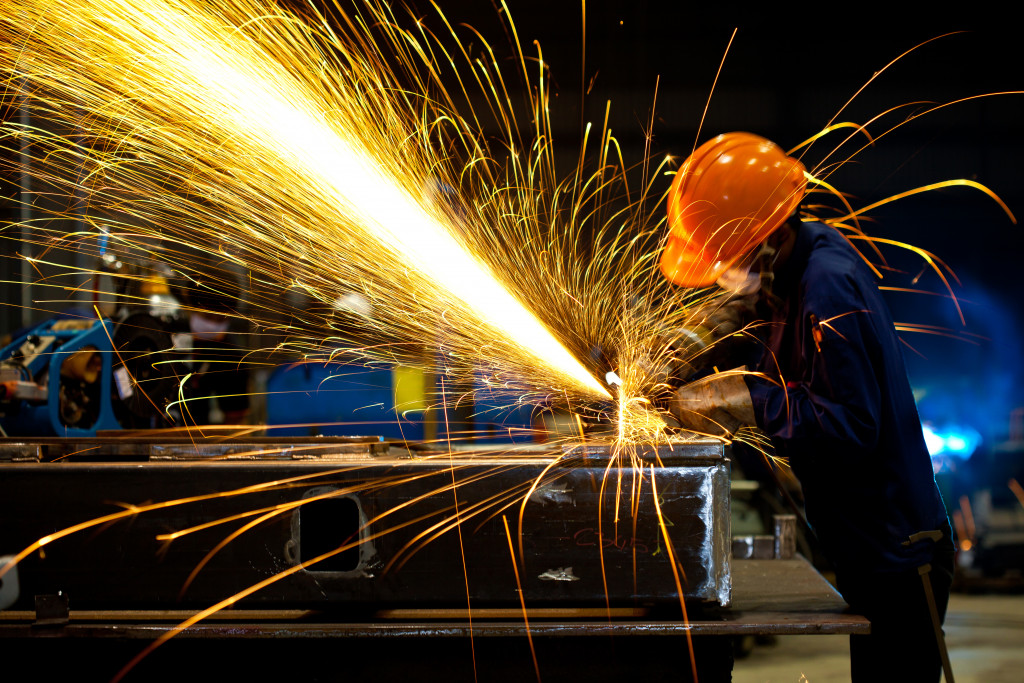Running a metal fabrication business can be very lucrative, but it’s important to remember that safety should always be your number one priority. You should implement some safety measures immediately to help you stay safe while working in your metal fabrication shop. Here are some tips that can help you implement the right safety measures.
Use Rigging Chains and Hooks to Carry Weight
As a metalworker, you know that having the right tools for the job is essential. Rigging chains and hooks are an invaluable part of your toolkit for lifting and moving heavy objects. By using a system of reliable rigging chains and hooks, you can safely lift and carry things that would otherwise be too heavy to budge. And because they distribute the weight evenly, they can help prevent damage to both the object being moved and the surrounding area.
Rigging chains and hooks are particularly useful in metal fabrication businesses, where heavy materials are often moved around. Rig systems are often used with overhead cranes to move materials from one shop area to another. If you’re not already using rigging blocks and tackles in your business, now is the time to invest in this essential tool.
Wear Personal Protective Equipment
Personal protective equipment, or PPE, is a key piece of safety gear in any metal fabrication shop. Welding sparks, flying debris, and dangerous chemicals are all risks that workers face daily. PPE helps to minimize these risks by protecting workers from potential injuries.
A welding helmet is the most basic form of PPE for metal fabrication workers. A welding helmet protects the wearer’s face and eyes from sparks and flying debris. Choosing a helmet specifically designed for welding is essential, as regular safety helmets will not provide adequate protection. Other forms of PPE commonly used in metal fabrication shops include gloves, aprons, and respiratory masks.
While PPE is essential for keeping workers safe, it is important to remember that it is only one part of a comprehensive safety program. PPE must be used in conjunction with other safety measures such as proper training, ongoing maintenance, and hazard identification to be truly effective.
Provide Training for Employees
It’s essential to provide training for your employees to properly implement your company’s processes and procedures. There are a few things to keep in mind when training your employees. First, you’ll need to identify the specific skills and knowledge your employees will need to master to succeed in their roles. Once you’ve identified the training needs, you’ll need to develop a training plan covering all the necessary topics.

Additionally, you’ll need to select an appropriate delivery method for the training (e.g., online, classroom-based, etc.). Finally, you’ll need to evaluate the effectiveness of the training program regularly and make adjustments as needed.
Have an Emergency Plan in Place
Disasters, both natural and man-made, can strike at any time. As a business owner, you must be prepared for anything that might come your way. A comprehensive emergency plan is the best way to protect your employees, customers, and your business.
A few key components should be included in any emergency plan. First, you must identify potential hazards that could affect your business. This will help you to better prepare for the unexpected.
Next, you need to develop evacuation procedures. Everyone should know what to do in an emergency, and multiple exit routes should be available. Finally, you need to have a communication plan in place. This will ensure that everyone is kept up-to-date on the latest information and that instructions can be easily conveyed during a chaotic situation.
Regularly Inspect Equipment
It’s essential to regularly inspect your equipment to ensure it’s in good working condition. This will help you avoid costly repairs or replacements down the road. Start by inspecting the outside of your machines for any signs of wear and tear. Look for cracks, dents, or other damage. Then, check all the moving parts to ensure they’re free of debris and properly lubricated.
Once you’ve gone over the outside of your machines, it’s time to test them out. Run them through their paces to see if they’re working as they should be. Pay attention to any strange noises or vibrations. Don’t hesitate to call a professional for help if something seems wrong.
You can create a safe and productive metal fabrication business by taking these steps. You can avoid potential accidents and keep your business running smoothly by providing training for your employees, having an emergency plan, and regularly inspecting your equipment. So, don’t wait – implement these safety measures today.
